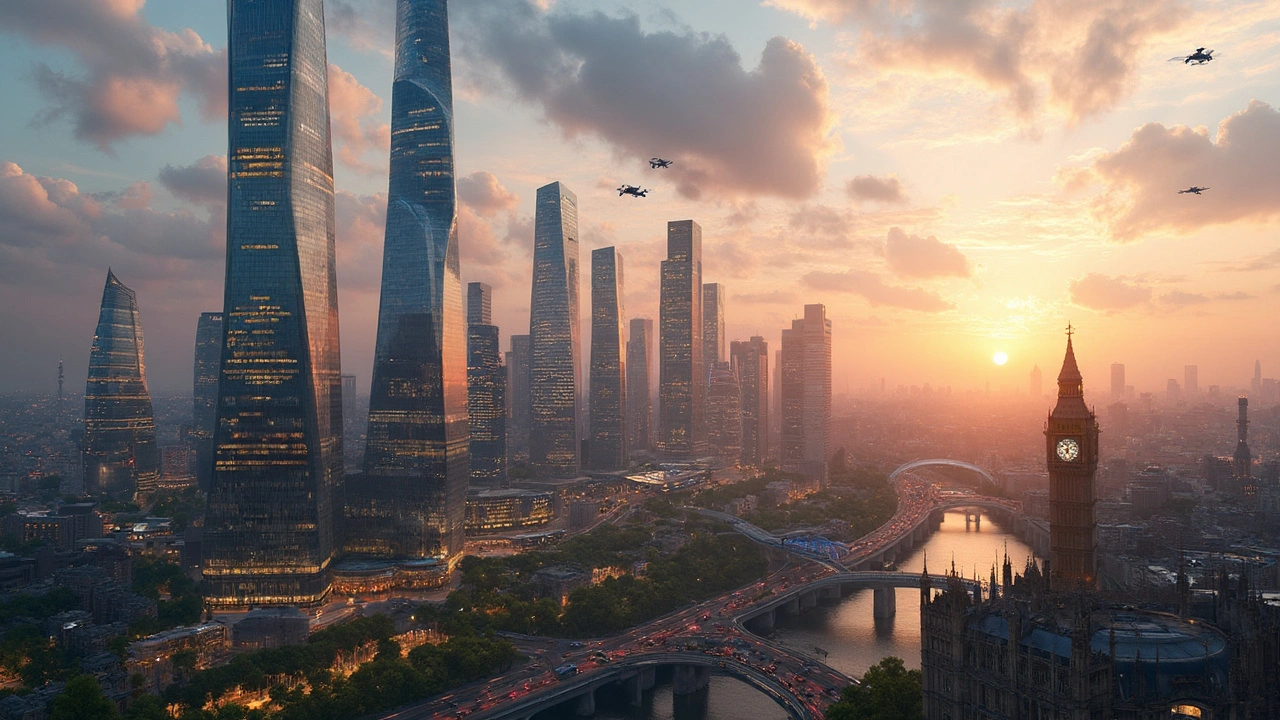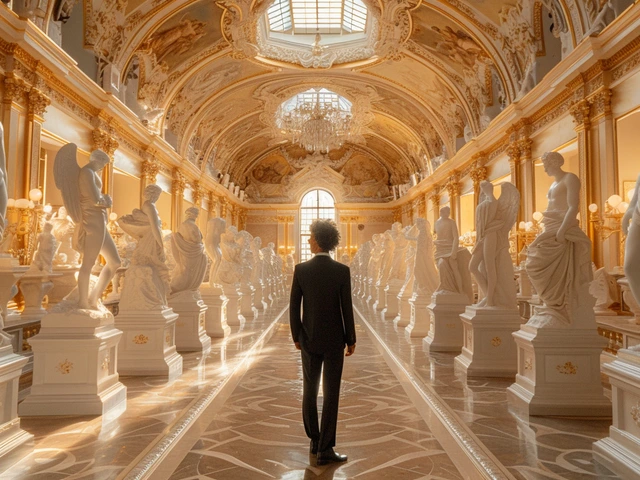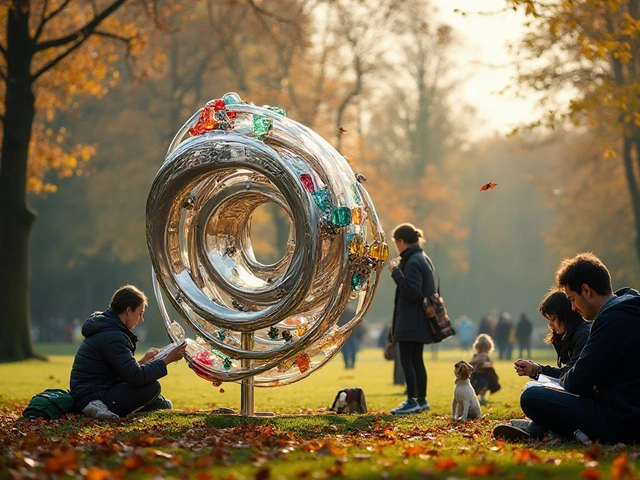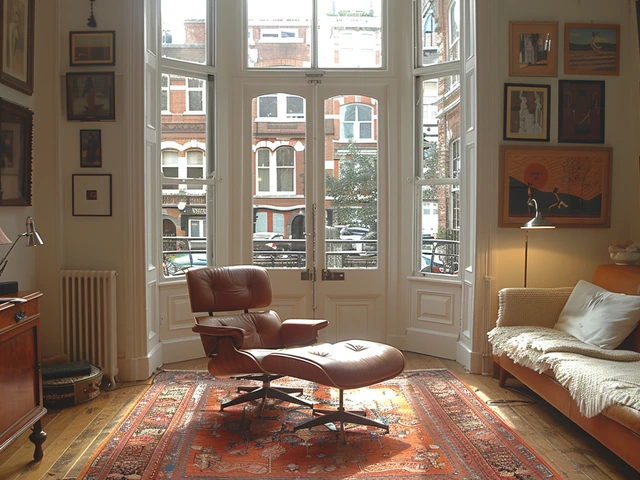Futurism is shaking up the design world in ways we couldn't have dreamed of a decade ago. Whether it’s smart furniture that adjusts to our moods or buildings that generate their own energy, the blend of technology with design is redefining how we experience spaces and products. But what exactly does futurism bring to the design table?
At its core, futurism in design is about anticipating needs and solving problems we didn’t even know we had. Imagine a chair that knows when you're stressed and adjusts itself for comfort. Sounds like science fiction, right? But these are the kinds of innovations shaping everyday life.
Technology plays a pivotal role here. From AI to virtual reality, these tools are enabling designers to create more dynamic, interactive, and sustainable solutions. They open up realms of possibility, allowing us to rethink everything from the materials we use to the way products function.
However, this isn't just about cool gadgets and sleek aesthetics. Futurism is underpinned by principles like sustainability and accessibility. It's about creating designs that are not only ahead of their time but are also grounded in improving usability and quality of life.
- The Basics of Futurism in Design
- Tech Innovations Leading the Change
- Futuristic Design in Everyday Life
- Challenges Facing Futurist Designers
- The Future of Futurist Designs
The Basics of Futurism in Design
So, what is futurism in design all about? At its heart, it's about using innovative approaches and technology to imagine what the future holds and bring that vision into the present. Instead of just sticking with what's currently possible, futurist designers push boundaries, thinking beyond traditional limitations.
Think of it like this: while traditional design might focus on aesthetics and functionality separately, futurism merges them with technology. It aims to create something not only beautiful but also forward-thinking and practical. This approach can be seen everywhere, from urban planning to wearable tech.
History of Futurism in Design
Futurism isn't new; it actually kicked off in the early 20th century. Initially, it was more of an art movement that embraced speed, technology, and industrial advancements. The idea was to break free from the past and express the dynamism of modern life.
Over time, these principles seeped into various design fields, inspiring architects and designers to think big and embrace future possibilities. Today, they form the backbone of what's possible in futuristic design.
Key Elements
Several key elements define futurist design. For one, there's the incorporation of cutting-edge technology. Designers are using AI, smart materials, and connected devices to enhance user experience and create adaptive environments.
Another element is sustainability. Futurist designs often prioritize eco-friendly materials and energy-efficient solutions, anticipating a world that's both technologically advanced and sustainable.
- Innovative Materials: From self-healing concrete to biodegradable plastics, new materials are allowing designers to experiment like never before.
- Adaptive Functionality: Think of spaces and products that can change based on user needs. It’s all about flexibility and personalization.
- Interactivity: Making products that interact with users in real time, providing immediate feedback or adaptation.
Design in this realm isn't static; it's alive, constantly evolving to meet future challenges and possibilities. By understanding these basics, you can better appreciate how futurism is not just about what's next, but what's needed for tomorrow.
Tech Innovations Leading the Change
When it comes to shaking up the design world, few things compare to the impact of tech innovations. These days, designers are teaming up with engineers and coders to create spaces and products that look straight out of a sci-fi flick. But it’s more than just flashy gadgets; it’s about smart solutions for real-world issues.
The Role of Artificial Intelligence (AI)
AI is becoming a game-changer in design. It's not just about creating designs faster; it’s about making them smarter. AI algorithms analyze user data and preferences, helping designers craft personalized experiences. Imagine AI-driven fashion apps that suggest clothing styles tailored to someone's mood or lifestyle, making customization more accessible than ever.
Virtual and Augmented Reality (VR/AR)
Talk about seeing things differently! With VR/AR tech, users can experience designs before they become reality. Architects are using VR to showcase new buildings, allowing clients to 'walk through' their future homes. It minimizes errors and aligns expectations—cutting costs and time.
3D Printing
Considered revolutionary, 3D printing presents endless possibilities in the world of design. It's perfect for creating prototypes quickly and efficiently, but it’s also useful in mass production. The furniture industry is seeing a shift with customized pieces at the click of a button, offering affordability and a unique touch.
Internet of Things (IoT)
From smart light bulbs to fridges that notify you when you're out of milk, the IoT connects our devices and enhances convenience. In home design, IoT technology promises energy-efficient systems that adapt to our daily routines, significantly reducing energy waste.
| Technology | Impact |
|---|---|
| AI | Personalizes user experience |
| VR/AR | Virtual design walkthroughs |
| 3D Printing | Customization and affordability |
| IoT | Improves energy efficiency |
These innovations aren’t just passing trends. They are reshaping the way designers approach projects. The intersection of technology and creativity in the design sector not only expands horizons but also answers everyday problems in a more sustainable and accessible way. It's exciting to see where this journey will lead us next!
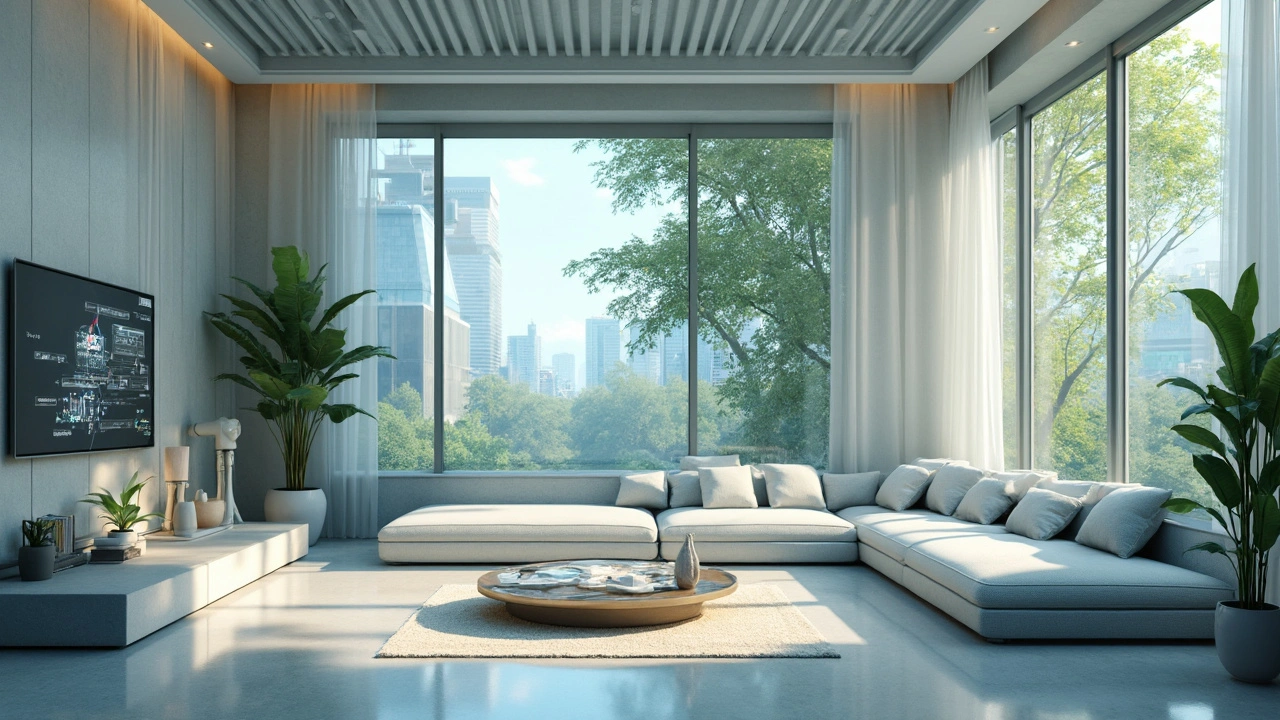
Futuristic Design in Everyday Life
Futurism in design is not just for science fiction movies; it’s becoming a part of our daily grind. You might not realize it, but many everyday objects are now infused with futuristic concepts that make our lives easier, more sustainable, and even a bit cooler.
Take smart homes, for example. These are no longer a vision of the future; they are here now. Many modern homes are equipped with interconnected devices that communicate with each other and the homeowner. Think about smart thermostats like Nest, which learn your heating preferences and adjust automatically to save energy. By using AI, these systems predict your needs, making homes more energy-efficient and ultimately lowering utility bills.
Smart Furniture and Appliances
It's not just about electronics either. Furniture is getting smarter, too. Imagine a sofa that adjusts its cushions based on how you sit, or a fridge that tells you when food is about to expire. These technological innovations are here to make life seamless.
Wearable Tech
Let’s not forget about what's happening with wearables. Whether it's smartwatches that track your health or VR headsets that let you travel without leaving your living room, these futuristic designs are becoming essential tools. Wearables now not only track fitness metrics but also provide health insights that can preemptively alert users to potential issues.
Transportation
Transportation is also undergoing a revolutionary shift. Electric vehicles like Tesla incorporate AI to provide self-driving capabilities, and public transportation systems worldwide are adopting cleaner, more efficient technologies.
Impact of Futurism on Lifestyle
So, how does all this futuristic stuff affect our lifestyle? The biggest change is convenience. With devices and systems designed to predict and respond to human needs, everything from managing household chores to commuting is becoming easier and more efficient.
| Device | Function |
|---|---|
| Smart Thermostats | Energy Efficiency |
| Wearable Tech | Health Monitoring |
| Smart Furniture | Comfort Adjustment |
Bottom line? Futurism isn't just about flashy designs. It's about using technology to create practical solutions that improve our everyday lives, helping us move forward while staying connected to the things that matter most.
Challenges Facing Futurist Designers
Diving into the world of futurism in design can feel like stepping into a sci-fi movie. But behind the sleek visuals and mind-boggling tech lies some very real challenges. The journey of turning futuristic ideas into concrete solutions isn't always a smooth ride.
Rapid Technological Changes
Designers today grapple with insanely fast tech advances. What's cutting-edge today might be obsolete tomorrow. Keeping up with the latest in technology, like AI or smart materials, and integrating them effectively can be daunting. It's a constant race against time to ensure designs remain relevant.
Balancing Innovation with Practicality
Sure, creating the next digital assistant or self-cleaning fabric is exciting. But, futurist designers often find themselves juggling innovation with what's actually usable for everyday folks. Too much focus on the fancy futuristic stuff might end up alienating the average user who just wants something that works well.
Sustainability Concerns
While pushing boundaries, designers can't ignore the environmental impact. With increasing awareness about sustainability, there's pressure to make design choices that are eco-friendly. Using recycled materials or energy-efficient technologies becomes a priority, even if it challenges the design's original vision.
User Acceptance
No matter how groundbreaking a design might be, if people don't buy into it, it's game over. Designers face hurdles in persuading users to trust and adapt to these new technologies. It’s like getting my grandma to use a smartphone; it takes patience and clarity.
Addressing these challenges requires a blend of creativity, agility, and practicality. But hey, that's what makes the journey of a futurist designer all the more thrilling. Conquering these challenges doesn't just push design forward—it shapes the future we all get to live in.
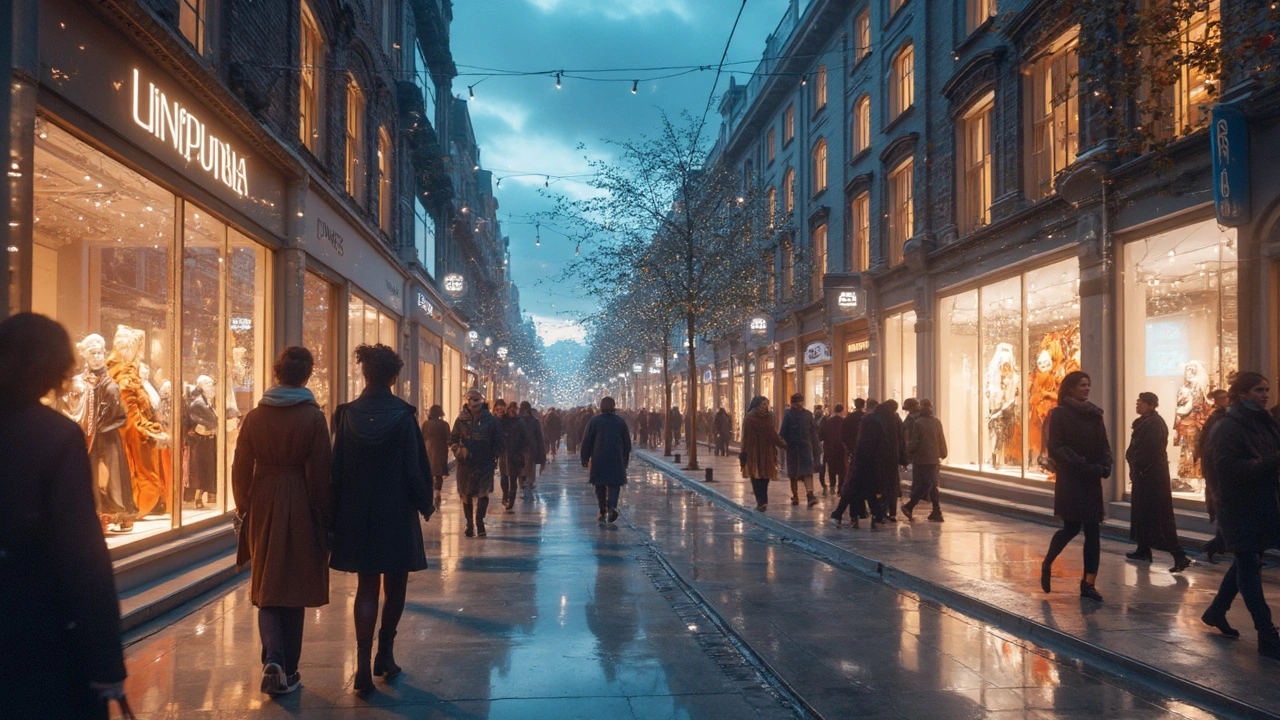
The Future of Futurist Designs
The future of futurist designs promises a more interconnected world where products and environments meet both functional and emotional needs. As designers leverage technology, they're creating systems that can adapt and evolve with user requirements, ensuring longevity and relevance.
One exciting prospect is the integration of AI in everyday objects. We're moving toward a future where your refrigerator can reorder groceries, or your car schedules its own maintenance. While these seem like far-off dreams, many companies like Tesla and Samsung are already dabbling in these technologies.
Personalization on a New Level
Imagine walking into a room, and it immediately adjusts the lighting and temperature based on your preferences. This isn't just about luxury; it's about efficiency and comfort, enhancing the way we live. Personalized designs ensure we engage with spaces that understand our needs, cutting down consumption and enhancing well-being.
"The intersection of AI and design offers endless possibilities, allowing us to create spaces that feel both intuitive and inspirational," says Liam Carter, a leading futurism strategist.
Sustainability and Ethics
As we embrace futurism, there’s a growing emphasis on sustainability. Using recycled materials goes hand-in-hand with ethical manufacturing practices. For instance, Adidas is exploring sustainable shoe designs utilizing ocean plastic.
Concern for environmental impact complements technological advancements, ensuring that futurist designs contribute positively to the world.
- Sustainability: Futuristic designs increasingly adopt green practices.
- Integration: Seamless tech integration makes everyday interactions smoother.
- Personalization: Designs are tailored, enhancing user experience.
What Lies Ahead
Looking ahead, we'll see more innovations in design and technology realms, possibly augmented and virtual realities integrating into daily life. This means homes, workspaces, and leisure centers could dramatically change their settings on demand. The future’s something to watch closely!
The road is filled with opportunities that promise to make our lives not just easier, but richer and more meaningful. Futurism isn't just about what's next—it's about how we get there, living better every step of the way.

